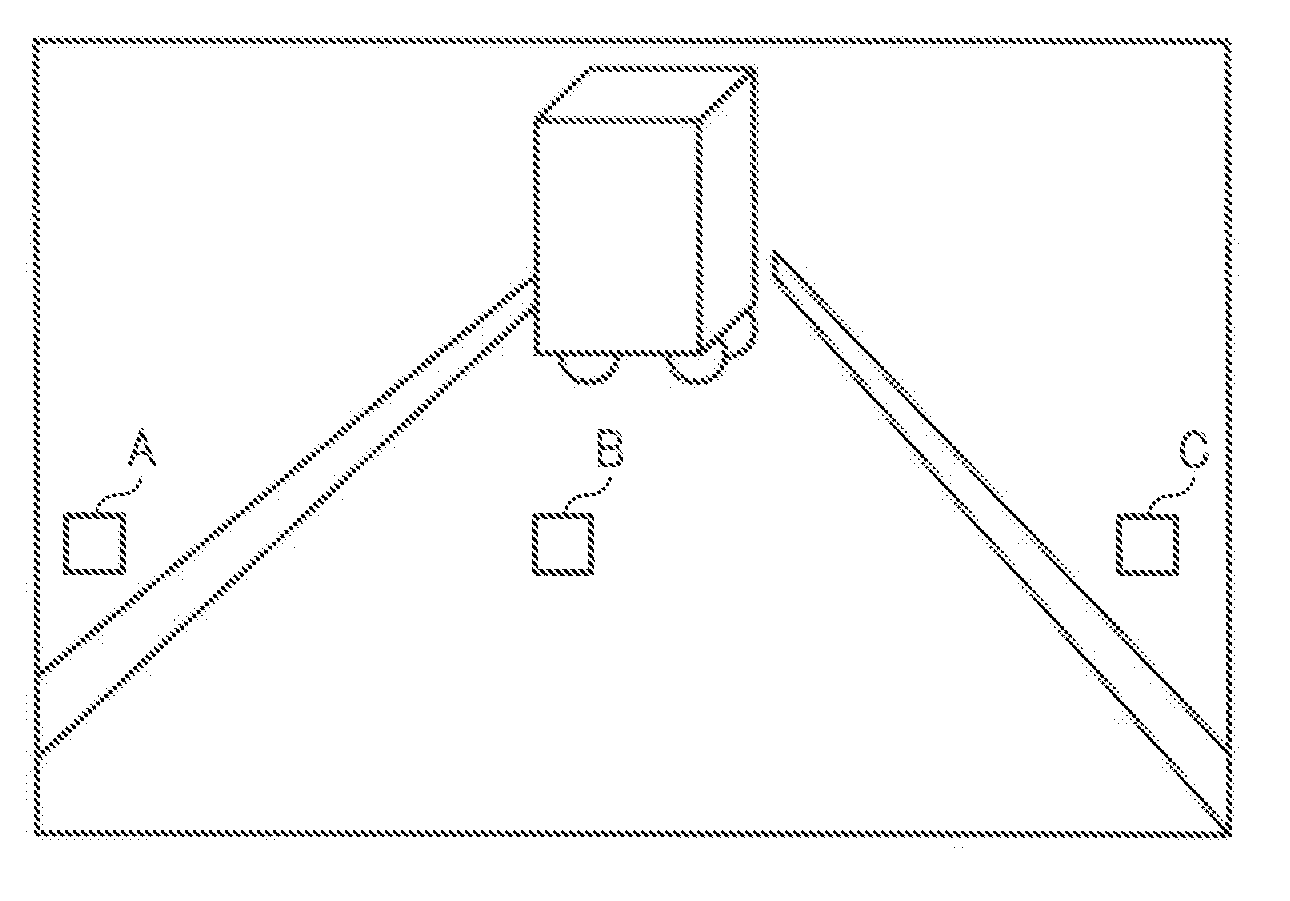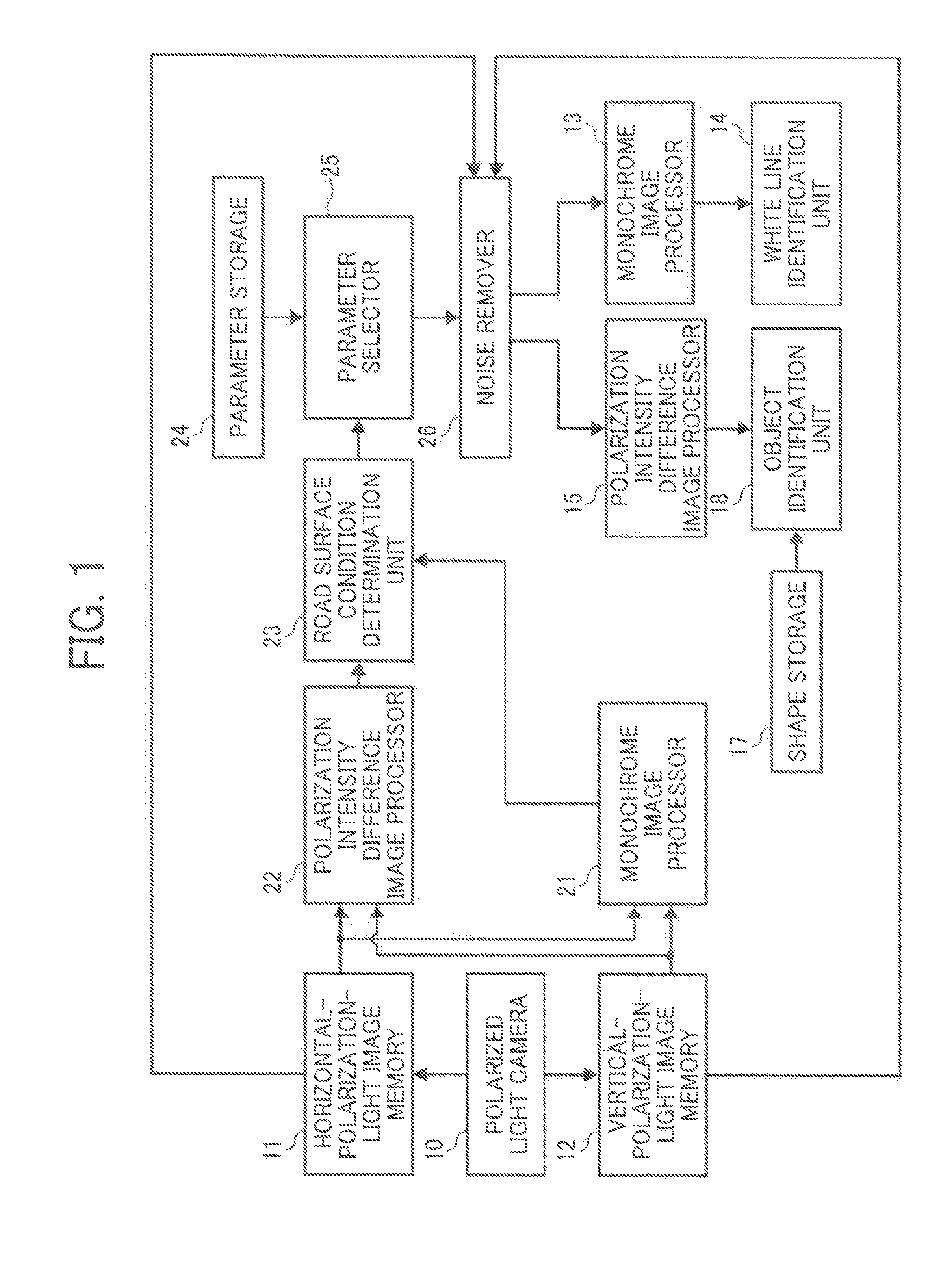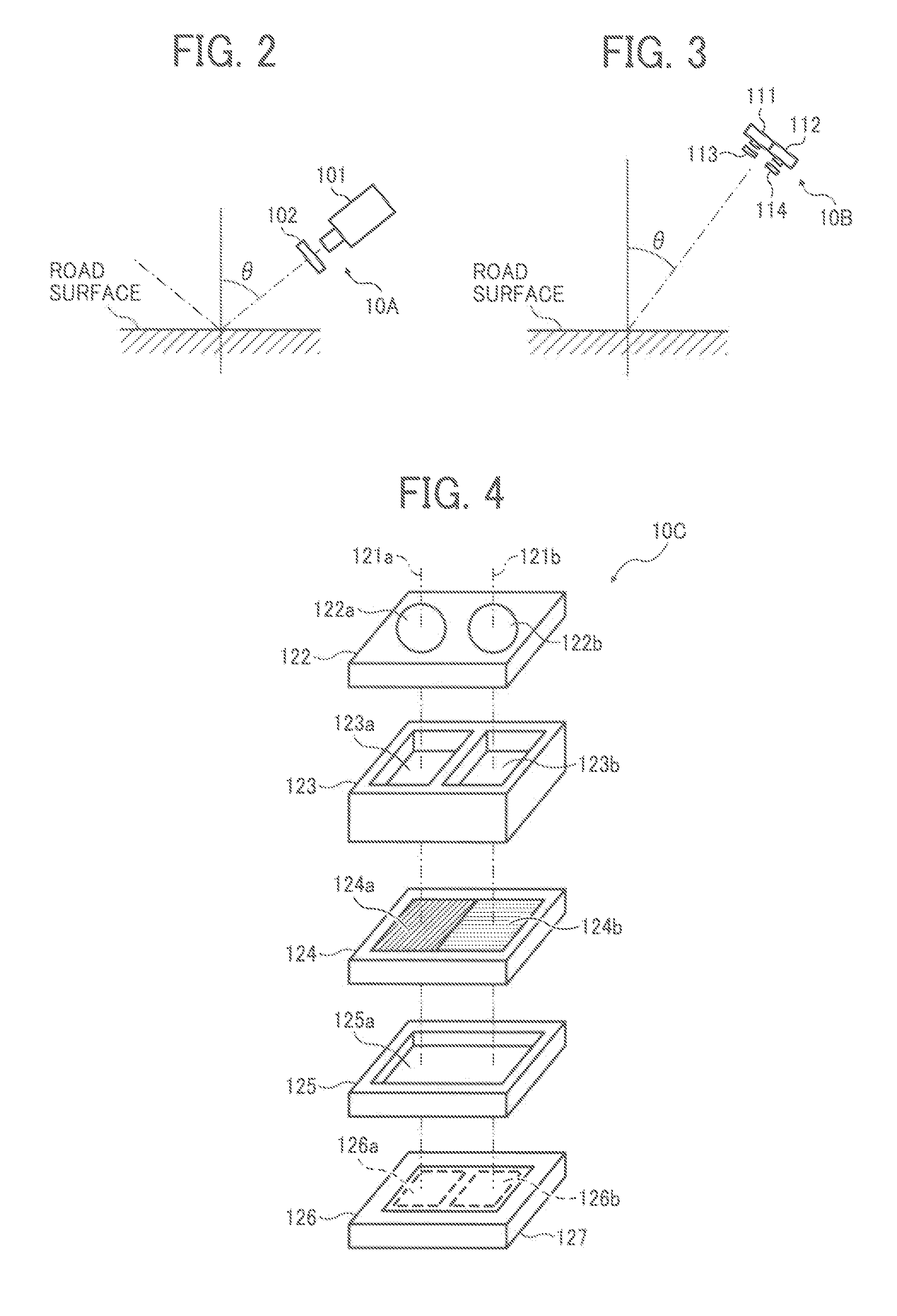Object identification device, moving object controlling apparatus having object identification device, information presenting apparatus having object identification device, and spectroscopic image capturing apparatus
a technology of object identification and information presenting apparatus, which is applied in the direction of optical radiation measurement, image enhancement, instruments, etc., can solve the problems of affecting the identification accuracy of objects, affecting the accuracy of light intensity data used for identifying objects, and initiating erroneous control or erroneous processing
- Summary
- Abstract
- Description
- Claims
- Application Information
AI Technical Summary
Benefits of technology
Problems solved by technology
Method used
Image
Examples
example 1
(Example 1 of Optical Filter 2)
[0235]FIG. 23 shows one example (example 1) of the optical filter 2. The optical filter 2 includes the light passing areas 2a and the polarization areas 2c. Hereinafter, for the simplicity of expression, the term of the light passing area 2a and the polarization area 2c may mean a single area or a plurality of areas. The light passing area 2a can pass both of P-polarized light component and S-polarized light component. The polarization area 2c can pass P-polarized light component but shields S-polarized light component. The light passing area 2a and the polarization area 2c are arranged in a grid pattern, in which the light passing area 2a and the polarization area 2c are alternatively arranged next to each other in two dimensional directions. In other words, the light passing area 2a and the polarization area 2c form a grid pattern, which may be called as a checkerboard pattern, which is an area-divided pattern. The interval of the grid pattern (or on...
example 2
(Example 2 of the Optical Filter 2)
[0237]FIG. 25 shows another example (example 2) of the optical filter 2. The optical filter 2 includes the light passing area 2a and the polarization area 2c. The light passing area 2a can pass both of P-polarized light component and S-polarized light component. The polarization area 2c can pass P-polarized light component but shields S-polarized light component. The light passing area 2a and the polarization area 2c are arranged in a grid pattern, in which the light passing area 2a and the polarization area 2c are alternatively arranged next to each other in one dimensional direction. In other words, the light passing area 2a and the polarization area 2c form a grid pattern, which may be called as a stripe pattern, which is an area-divided pattern. The interval of the grid pattern (or one grid width or one grid area) can be matched to a pixel pitch of the image sensor 4.
[0238]When the optical filter 2 is formed with the stripe pattern, which is a ...
example 3
(Example 3 of Optical Filter 2)
[0242]FIG. 28 shows another example (example 3) of the optical filter 2. The optical filter 2 includes the light passing area 2a and the polarization area 2c. FIG. 28 shows the polarization area 2c overlaid on the image sensor 4. In the optical filter 2 of FIG. 28, the light passing area 2a and the polarization area 2c are arranged in a grid pattern, in which the light passing area 2a and the polarization area 2c are alternatively arranged next to each other in one dimensional direction. In other words, the light passing area 2a and the polarization area 2c form a grid pattern, which may be called as a stripe pattern, which is an area-divided pattern. Such configuration is similar to the configuration of the optical filter 2 shown in FIG. 25.
[0243]As for the optical filter 2 shown in FIG. 25, the long side of the polarization area 2c is set parallel to the pixel line extending in the Y direction. In contrast, as for the optical filter 2 shown in FIG. 2...
PUM
 Login to View More
Login to View More Abstract
Description
Claims
Application Information
 Login to View More
Login to View More - R&D
- Intellectual Property
- Life Sciences
- Materials
- Tech Scout
- Unparalleled Data Quality
- Higher Quality Content
- 60% Fewer Hallucinations
Browse by: Latest US Patents, China's latest patents, Technical Efficacy Thesaurus, Application Domain, Technology Topic, Popular Technical Reports.
© 2025 PatSnap. All rights reserved.Legal|Privacy policy|Modern Slavery Act Transparency Statement|Sitemap|About US| Contact US: help@patsnap.com



